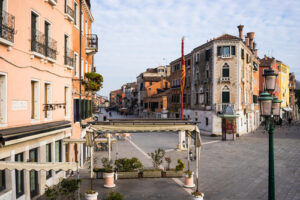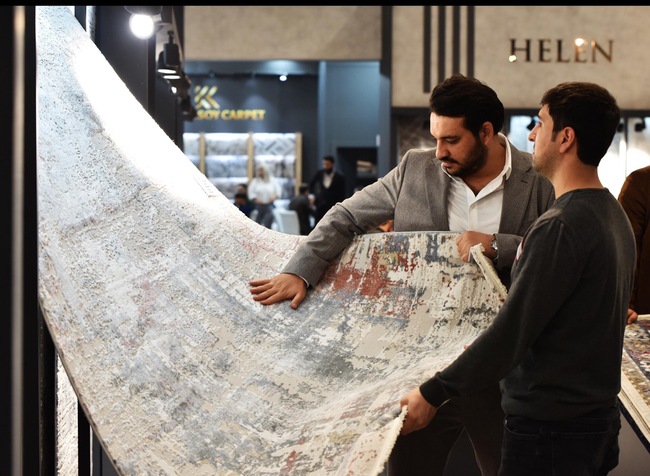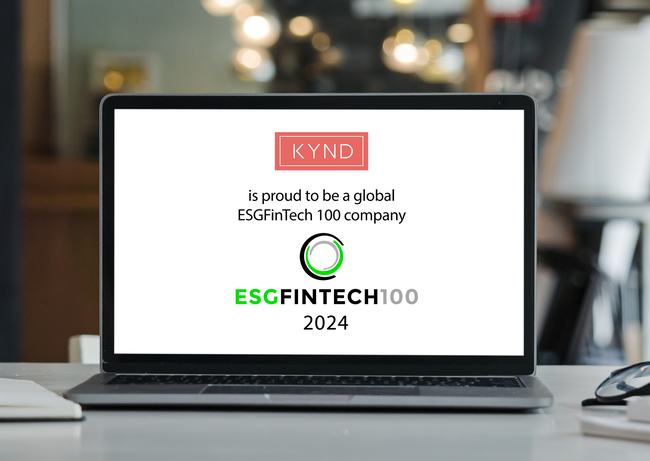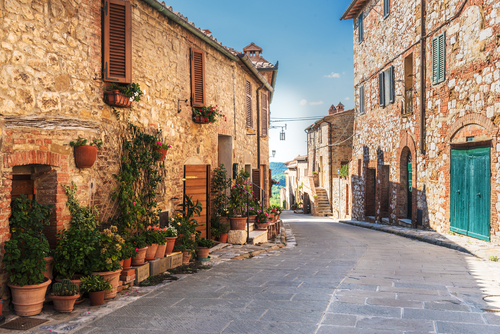Italy’s streets are more than just pathways; they are the lifeblood of the country’s rich history and vibrant culture. These streets are like open-air museums, offering breathtaking glimpses of Italy’s architectural grandeur, picturesque landscapes, and unique monuments.
From the winding alleyways of ancient cities to the grand boulevards lined with majestic buildings, Italian streets encapsulate the essence of the nation’s heritage. They invite visitors to wander and discover the charm and beauty that lie around every corner. Join us as we explore some of the most beautiful streets in Italy, each one a testament to the timeless allure and historical significance of this remarkable country.
Via dei Fori Imperiali, Rome
Via dei Fori Imperiali is one of Rome’s most iconic streets, steeped in history and surrounded by ancient ruins that tell the story of the Roman Empire’s grandeur. This majestic road runs through the heart of the Eternal City, connecting Piazza Venezia to the Colosseum, and offers visitors a journey through time as they walk along its length.
Historical significance
The construction of Via dei Fori Imperiali began in 1931 under the orders of Benito Mussolini, who intended to create a grand boulevard that displayed the power and glory of ancient Rome.
The road was completed in 1932, and its creation involved the excavation and partial destruction of significant archaeological sites, as it cut through the ancient Roman fora (public squares). Despite the controversies surrounding its construction, Via dei Fori Imperiali now serves as a testament to both the ancient and modern history of Rome.
Importance and tourist appeal
Via dei Fori Imperiali is lined with some of Rome’s most important archaeological sites, making it a must-visit destination for history enthusiasts and tourists. As you stroll down this grand avenue, you can admire the remains of the Forum of Augustus, Forum of Nerva, Forum of Trajan, and Forum of Caesar, each offering a glimpse into the political, social, and economic life of ancient Rome.
The road culminates at the magnificent Colosseum, one of the most famous landmarks in the world. This ancient amphitheatre, a symbol of Rome’s enduring legacy, stands at the end of Via dei Fori Imperiali, providing a dramatic backdrop to the historic journey along the avenue. The view from the street, with the Colosseum framed by the ruins of the fora, is truly spectacular and offers countless photo opportunities.
Walking along Via dei Fori Imperiali allows visitors to experience the grandeur of Rome’s past while being immersed in the city’s vibrant present. The street is often closed to traffic on weekends and public holidays, making it an even more enjoyable and pedestrian-friendly experience. It’s a popular spot for guided tours, where knowledgeable guides provide fascinating insights into the history and significance of the ancient sites that line the road.
In addition to its historical importance, Via dei Fori Imperiali is a vital part of Rome’s cultural fabric. It hosts various events and celebrations throughout the year, including parades and public ceremonies, adding to its dynamic atmosphere.
Via dei Fori Imperiali is more than just a road; it’s a living museum that captures the essence of Rome’s illustrious past and its enduring influence on the present. Whether you’re a history buff, a casual tourist, or someone simply looking to soak in the beauty of Rome, a walk down Via dei Fori Imperiali is an unforgettable experience that highlights the timeless charm and historical richness of the Eternal City.
Via dei Calzaiuoli, Florence
Via dei Calzaiuoli is one of Florence’s most famous and vibrant streets, connecting two of the city’s most significant landmarks: the Piazza del Duomo and the Piazza della Signoria. This bustling pedestrian thoroughfare is steeped in history and brimming with cultural and commercial significance, making it a must-visit for anyone exploring the heart of Florence.
Historical significance
The name Via dei Calzaiuoli dates back to the Middle Ages and is derived from the numerous shoemakers’ shops (calzaiuoli) that once lined the street. This historic street has long been a central artery of Florentine life, reflecting the city’s evolution from its medieval origins to its Renaissance glory and beyond. Throughout the centuries, Via dei Calzaiuoli has been a hub of commerce and social activity, serving as a vital link between Florence’s religious, political, and economic centres.
Importance and tourist appeal
Walking along Via dei Calzaiuoli is like taking a journey through Florence’s rich history and vibrant present. The street is home to a variety of shops, cafes, and historical buildings, offering visitors a blend of modern amenities and historic charm. As you stroll down this lively street, you’ll encounter numerous points of interest that highlight Florence’s artistic and architectural heritage.
One of the key attractions along Via dei Calzaiuoli is the Church of Orsanmichele, a unique building that combines religious, civic, and artistic functions. Originally built as a grain market in the 14th century, it was later converted into a church. Some of the most renowned Renaissance artists, including Donatello and Ghiberti, making it a remarkable example of Florence’s artistic legacy, adorn the exterior of Orsanmichele with stunning statues.
Via dei Calzaiuoli also serves as a gateway to some of Florence’s most iconic landmarks. At one end of the street lies the Piazza del Duomo, home to the magnificent Florence Cathedral (Santa Maria del Fiore), the Baptistery, and Giotto’s Campanile. This area is the epicenter of Florence’s religious life and displays some of the most breathtaking architecture in the city. At the other end is the Piazza della Signoria, a political and social hub dominated by the imposing Palazzo Vecchio and the outdoor sculpture gallery of the Loggia dei Lanzi.
The street itself is a bustling shopping destination, lined with high-end boutiques, fashion stores, and artisanal shops, reflecting Florence’s status as a global fashion capital. Whether you’re searching for luxury goods, traditional Florentine crafts, or simply looking to enjoy a leisurely window-shopping experience, Via dei Calzaiuoli has something for everyone.
Culinary delights also abound along Via dei Calzaiuoli. Numerous cafes and ice cream parlours offer a chance to relax and indulge in some of Florence’s famous treats. Enjoying an ice cream while people watching on this lively street is a quintessential Florentine experience.
Via dei Calzaiuoli is more than just a street; it is a vibrant artery that pulses with the life and history of Florence. Its blend of historical landmarks, cultural attractions, and modern amenities makes it a focal point of the city, where past and present converge in a dynamic and engaging way. Whether you’re exploring the architectural wonders, indulging in some retail therapy, or simply soaking in the atmosphere, a walk down Via dei Calzaiuoli is an essential part of any visit to Florence.
Via Garibaldi, Venice

Via Garibaldi (above) is one of the widest and most vibrant streets in Venice, offering a unique blend of local charm, historical significance, and tourist appeal. Unlike the narrow alleys and canals that characterize much of Venice, Via Garibaldi stands out with its spaciousness and lively atmosphere, making it a favorite spot for both locals and visitors.
Historical significance
Via Garibaldi was created in the early 19th century during the Napoleonic occupation of Venice. The street was carved out by filling in a canal, a rare occurrence in a city defined by its waterways. Named after Giuseppe Garibaldi, the renowned Italian general and nationalist, the street commemorates his contributions to the unification of Italy.
Historically, Via Garibaldi has always been a bustling area, serving as a major thoroughfare that connects the residential district of Castello with the heart of Venice. Its strategic location and wide layout have made it a vital part of the city’s social and commercial life.
Importance and tourist appeal
Today, Via Garibaldi remains one of the few places in Venice where you can experience a more local, authentic side of the city away from the typical tourist paths. The street is lined with shops, cafes, and restaurants, offering a taste of everyday Venetian life. Here, you can find everything from fresh produce at local markets to traditional Venetian crafts and souvenirs.
One of the key attractions near Via Garibaldi is the Giardini della Biennale, a beautiful garden and the main venue for the Venice Biennale, an internationally renowned art exhibition that takes place every two years. The gardens offer a peaceful retreat from the bustling city streets and are a great place to explore contemporary art during the Biennale.
Another nearby attraction is the Arsenale di Venezia, a historic shipyard and naval depot that played a crucial role in Venice’s maritime history. Today, the Arsenale hosts various cultural events and exhibitions, providing visitors with insights into Venice’s rich naval heritage.
Via Garibaldi itself is a delightful place to stroll, especially in the evenings when the street comes alive with locals enjoying their aperitivo. The wide street is perfect for leisurely walks, allowing you to soak in the lively atmosphere and observe the daily rhythms of Venetian life.
For those traveling to Venice from other parts of Italy, the city is easily accessible. For example, you can take a train from Florence to Venice with Italo, allowing you to reach the city in about two hours. You can book your ticket directly online, on the official website: https://www.italotreno.com/en/destinations-timetable/florence-venice-tickets. Upon arrival, Via Garibaldi is a wonderful starting point to explore the unique character of Venice.
Via Garibaldi offers a distinct perspective of Venice, combining historical depth with vibrant local culture. Whether you’re exploring its historical sites, enjoying the local cuisine, or simply taking in the lively atmosphere, Via Garibaldi provides a memorable experience that captures the essence of Venetian life.
Via Toledo, Naples
Via Toledo is one of Naples’ most famous and bustling streets, rich in history and brimming with cultural and commercial significance. Stretching for approximately 1.2 kilometres, this vibrant avenue runs from Piazza Dante to Piazza Trieste e Trento, linking many of the city’s key historical and modern attractions.
Historical significance
Via Toledo was commissioned by the Spanish viceroy Pedro Álvarez de Toledo in 1536, during the Spanish rule of Naples. Originally named Via Roma, it was intended to modernize and expand the city, making it a central artery for commerce and social life. Over the centuries, the street has been a witness to numerous historical events and has undergone several transformations, but it has always remained a central part of Neapolitan life.
In 1870, the street was officially renamed Via Toledo, reverting to its original name in honour of its founder. The architecture along Via Toledo reflects its long history, with a mix of Renaissance, Baroque, and Neoclassical buildings that display the city’s diverse cultural heritage.
Importance and tourist appeal
Today, Via Toledo is not only a historical landmark but also one of Naples’ main shopping streets, attracting both locals and tourists alike. The street is lined with an array of shops, from high-end boutiques and international brands to local artisan stores, making it a shopper’s paradise. Additionally, numerous cafes, restaurants, and ice cream parlours provide many opportunities to sample Neapolitan cuisine and enjoy the lively street atmosphere.
One of the street’s most notable attractions is the Toledo Metro Station, often regarded as one of the most beautiful subway stations in the world. Opened in 2012, the station is a masterpiece of contemporary art and design, featuring stunning mosaics and installations that reflect the themes of light and water.
Another significant landmark on Via Toledo is the Galleria Umberto I, an elegant shopping arcade built in the late 19th century. This stunning glass-roofed gallery is home to numerous shops, cafes, and cultural venues, and is a fine example of Neoclassical architecture.
Via Toledo also leads to several important cultural sites, including the Palazzo Zevallos Stigliano, which houses a gallery with works by prominent artists such as Caravaggio. Additionally, the nearby Piazza del Plebiscito and the Royal Palace of Naples are key historical and cultural attractions easily accessible from Via Toledo.
Walking down Via Toledo offers a dynamic and immersive experience, capturing the essence of Naples’ vibrant culture and history. The street is always bustling with activity, reflecting the lively spirit of the city and providing a perfect blend of old-world charm and modern vitality.
For visitors, exploring Via Toledo is a must-do experience in Naples. Whether you’re interested in shopping, dining, or simply soaking up the local atmosphere, Via Toledo offers something for everyone. Its historical significance, coupled with its role as a contemporary cultural hub, makes it one of the most important and appealing streets in Naples.
Via dell’Amore, Cinque Terre
Via dell’Amore (Path of Love) is one of the most famous and picturesque walking trails in Italy, nestled in the stunning region of Cinque Terre. This romantic pathway connects the charming villages of Riomaggiore and Manarola, offering breathtaking views of the Ligurian coastline and the Mediterranean Sea. Via dell’Amore is not just a trail; it is a symbol of the timeless beauty and enchanting allure of the Cinque Terre region.
Historical significance
The construction of Via dell’Amore began in the early 20th century as part of a larger project to build a railway line between the villages of Cinque Terre. The trail was initially created as a simple pathway for workers to move between the construction sites, but it soon became a popular route for locals and visitors alike, drawn by its scenic beauty and convenient connection between the villages.
Over the years, Via dell’Amore has earned a reputation as a romantic destination, attracting couples from around the world who come to walk hand-in-hand along its picturesque path. The name “Via dell’Amore” itself speaks to the trail’s romantic appeal, and it has become a favorite spot for proposals, wedding photos, and romantic strolls.
Importance and tourist appeal
Via dell’Amore is renowned for its stunning vistas and unique charm. The trail is relatively easy to walk, making it accessible to visitors of all ages and fitness levels. As you walk along the pathway, you’ll be treated to panoramic views of the rugged cliffs, crystal-clear waters, and terraced vineyards that define the Cinque Terre landscape. The sight of colorful houses perched on the cliffs, with the sea stretching out below, is truly a sight to behold.
The trail is also dotted with benches and viewpoints where you can stop to rest and take in the scenery. Along the way, you’ll find numerous spots perfect for taking memorable photographs, capturing the beauty of the Cinque Terre in all its glory. One of the most iconic features of Via dell’Amore is the “Lovers’ Lock Wall,” where couples attach padlocks as a symbol of their eternal love.
Via dell’Amore is more than just a scenic walk; it’s a cultural experience that immerses you in the essence of the Cinque Terre. The trail provides an intimate glimpse into the region’s natural beauty and the harmonious relationship between the land and its people. Walking this path allows you to connect with the local heritage and the timeless traditions that have shaped this unique part of Italy.
For those planning to visit Cinque Terre, walking Via dell’Amore is a must-do activity. The trail can be easily accessed from either Riomaggiore or Manarola, both of which are connected by regular train services to other parts of the region. The Cinque Terre Card, which grants access to the trails and local transportation, is a convenient option for visitors.
Via dell’Amore stands as a testament to the enchanting beauty and romantic allure of Cinque Terre. Whether you’re visiting with a loved one or exploring solo, this iconic trail offers an unforgettable experience that showcases the best of what this remarkable region has to offer. Walking the Via dell’Amore is not just a journey through breathtaking scenery; it’s a celebration of love, nature, and the timeless magic of Cinque Terre.














